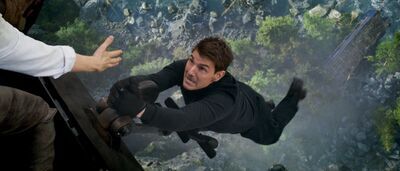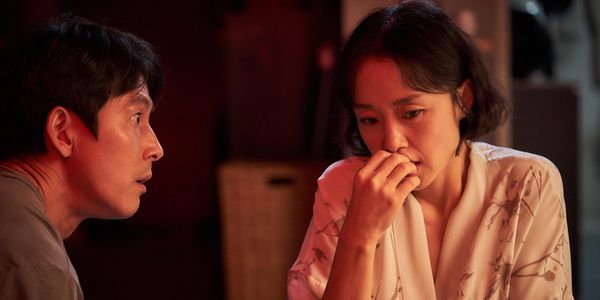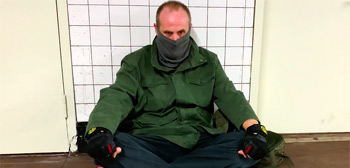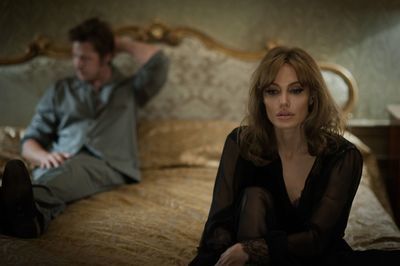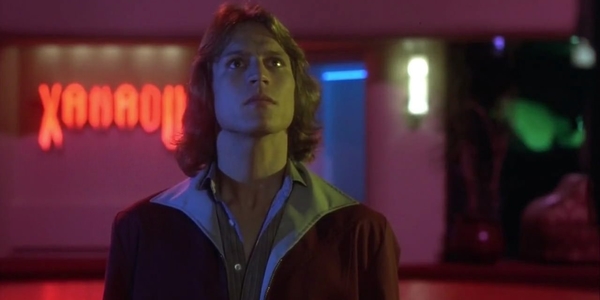10 Great Social Isolation Movie Scenes
The never-ending pandemic gave us a deeper understanding of social isolation and a kinship with the fictional characters who experienced it.
It’s safe to say we’re all ready for this to be over (in fact, that might be the understatement of the year).
In the meantime, we can take comfort in enjoying movies about characters going through something similar (if a bit more dramatic). So with that in mind, here are 10 memorable movie scenes of social isolation that we can more deeply relate to these lockdown days.
(Warning, multiple spoilers ahead!)
‘I Am Legend’ – “Please Say Hello to Me”
In the third film adaptation of Richard Matheson’s novel, Will Smith plays military scientist Robert Neville, the last human inhabitant of post-apocalyptic New York City (and maybe the world).
Living in a well-secured house with his only companion, a faithful German Shepard, Neville passes his time gathering food, using the city as a playground and trying to find a cure for the disease that turned humans into violent, nocturnal monsters.
This routine keeps him sane for a while, but after losing his canine companion, the realization that he is truly alone causes his hope to drain away and the dam finally breaks on his sanity. He doesn’t “snap” in a typical Hollywood fashion, but instead loses his mind in a heartbreaking scene where he begs a mannequin to talk to him.
The silence he receives in response is simply more than he can bear.
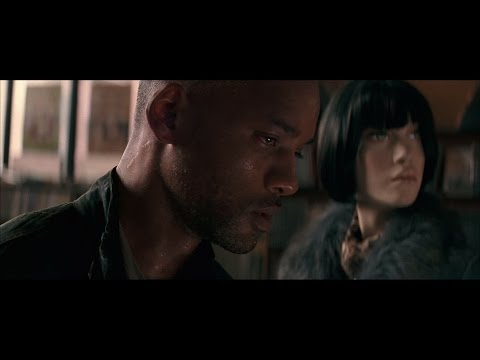
Many viewers had their issues with the film, particularly a retooled ending from Matheson’s story to make Smith’s character look more heroic. But the first half is an undeniably powerful look at how the loneliness of quarantine living can erode our mental health, illustrated by Smith’s excellent performance.
‘The Hurricane’ – Solitary Confinement
Director Norman Jewison’s historical drama recalling falsely-imprisoned boxer Ruben “Hurricane” Carter has been largely forgotten these days. Perhaps it’s due to almost everything depicted in it was a lie to push Hollywood’s “everyone was racist back then” narrative. But even as a work of fiction, there are aspects of the film worth appreciating, starting with Denzel Washington’s magnificent lead performance as Carter.
It’s a textbook example of how a great actor can transcend the movie he’s in and make it worth watching all by himself. Throughout the film, we feel Carter’s barely-suppressed rage at being locked up for a crime he didn’t commit. It threatens to strip him of his humanity as well as his freedom.
Nowhere is this better exemplified than a scene where he is put into solitary confinement for an extended period of time. Stuck in the dark by himself, day after day, with no human contact, we watch as he desperately struggles to hold onto his grasp of reality. He talks to himself, essentially willing himself to keep it together somehow.
It’s a harrowing look at how isolation and hopelessness can take its toll on our mental state, if left unchecked. And Washington sells it perfectly.
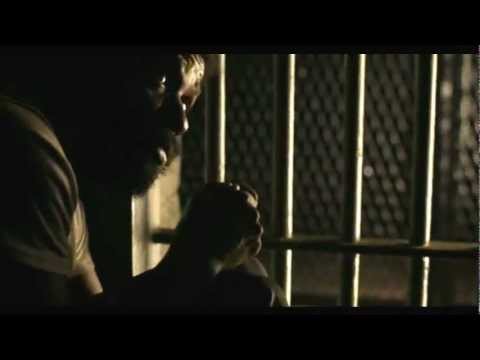
‘Flushed Away’ – Roddy’s Home Routine
On the other hand, being alone doesn’t always have to be completely soul-crushing. In fact, as “Flushed Away” shows, with some resources and a little creativity, it can be a ton of fun.
The wacky animated flick involves a pampered pet rat named Roddy (Hugh Jackman) whose comfortable existence is interrupted by getting flushed down the toilet. He must now make his way through an uncomfortable and dangerous trek in the sewer with the working-class rodents who call it home.
But before the main adventure starts, we’re treated to a nifty opening sequence where we see how the mostly-neglected pet fills out his lonely existence with everything from a volleyball game to a date with a Barbie doll, all winkingly set to Billy Idol’s “Dancing With Myself.”
It’s a lively, fun montage, albeit one with a sad undercurrent that lets us know just how much Roddy craves real companionship. Sure, play-acting a romantic date and a fun day of friendship with a bunch of dolls can be a blast, but it doesn’t really fix the hole inside. Still, you gotta give Roddy credit for making the best of things and having a good time.
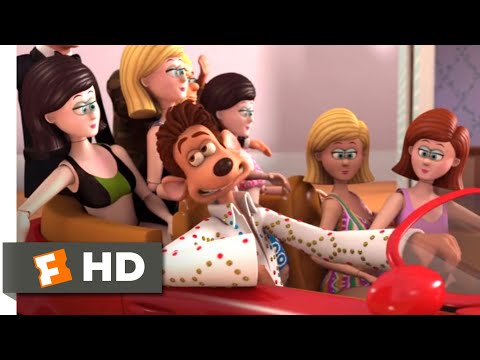
‘Ant-Man and the Wasp’ – Scott’s House Arrest
A minor but enjoyable entry in the MCU series, “Ant-Man and the Wasp” offered a refreshing return to more light-hearted Marvel storytelling after the intensity of “Avengers: Infinity War.” This is best exemplified by its hero, Scott Lang AKA Ant-Man (Paul Rudd) and this amusing opening sequence.
Like the aforementioned “Flushed Away,” the movie begins with its hero trapped at home (he’s confined to house arrest after siding with Captain America in “Civil War”). A montage of him trying to pass the time alone any way he can ensues. Unlike the animated rat in “Flushed Away,” Scott isn’t trying to stave off loneliness, just boredom.
He’s used to being alone (he’s an ex-convict, after all), but after getting a taste of the excitement and action of being a superhero, being stuck in a house alone seems almost as tedious as being back in prison, even if it is a lot more comfortable.
Like the movie it’s in, the scene is inconsequential but fun, an entertaining little montage buoyed by Rudd’s natural charm and comedic talent (his character is the only hero in the Marvel Cinematic Universe that is a genuinely nice guy). The sequence hums to the tune of The Partridge Family’s “Come On, Get Happy.”
For fans still bummed out by the ending of “Infinity War,” it was exactly the pick-me-up they needed. (Plus, it taught us about the practical aspects of things like how to take a bath while wearing an ankle monitor, which is something I had never really considered.) And for those of us still trying to get through 2020 with our sanity intact, it’s a good reminder that quarantine can at least be fun.
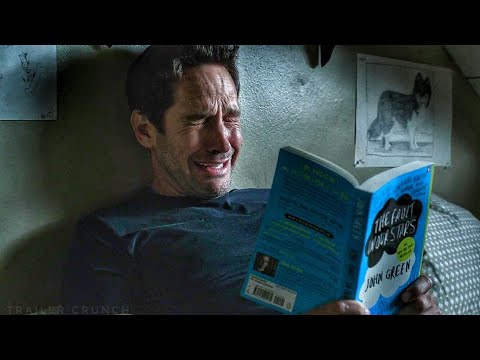
‘WALL-E’ – Just Another Workday
For what has to be Pixar’s most depressing movie, “WALL-E” starts out on a deceptively light note, its titular robot going about his workday, cheerfully cleaning up garbage and storing it away for future disposal.
However, his happy-go-lucky attitude is all blissful ignorance, as he doesn’t realize the bigger picture. He’s the only inhabitant (other than a cockroach he has befriended) of a post-apocalyptic Earth that has been ruined by pollution and overpopulation.
Like a lot of us who are currently working from home in isolation, he has found temporary solace in his day-to-day work, but it’s a poor substitute for the true meaning and companionship his existence lacks.

Eventually, his bubble of cheery isolation is punctured when he unexpectedly meets another robot, a female model named EVE, who has come to Earth looking for signs of new life. The feelings WALL-E develops for her – companionship and something resembling love – awaken him to both the realization of what life is really about, and to the sad fact that he is an insignificant cog in a machine that has completely forgotten him.
Through EVE, he reconnects with the last survivors of the human race (circling above the planet in computer-provided luxury while long awaiting their return to Earth), and is introduced to both danger and to the opportunity to fight against the dark forces that are keeping humans in their comfortable enslavement.
Amidst the film’s endearing hero, sharp imagery and admittedly farfetched apocalyptic scenario, there is a message about how our lives only have real meaning when we’re able to connect with others.
That theme has a special resonance these days.
‘Dawn of the Dead’ – Hollywood Squares
In lockdown, it’s absolutely essential to have fun any way you can. After all, as the great party poet Jimmy Buffett put it, “if we couldn’t laugh, we would all go insane.”
Zack Snyder’s excellent 2004 “Dawn of the Dead” remake reimagined a bloody, badass zombie apocalypse tale for the 21st century that covered a lot of interesting thematic ground amidst the frights and bloodshed.
And one of the major themes explored was that people locked down to avoid an external threat can be threatened by an equally dangerous, internal one: madness. People can only stay hemmed-in without hope for so long before they start to lose it. As Ving Rhames’ character puts it, “there are some things worse than death, and one of them is sitting here waiting to die.”
One of the ways the characters in DotD keep their sanity is to engage in what passes for recreation in the zombie apocalypse. In this case, that means sitting on a rooftop with a rifle and playing a grisly game of “Hollywood Squares,” in which they shoot zombies that resemble celebrities.
It’s a wonderful, darkly comic scene that prompts the group’s conscience, Ana (Sarah Polley), to question just how bad the other survivors’ childhoods were. But in reality, what’s transpiring is just a lot of pent-up frustration being purged in an act of wickedly funny violence. In a normal situation it might seem disturbing, but in the zombie apocalypse it’s as harmless as punching a pillow.
And hey, what other movie scene could get away with its heroes gleefully shooting Rosie O’Donnell in the head?
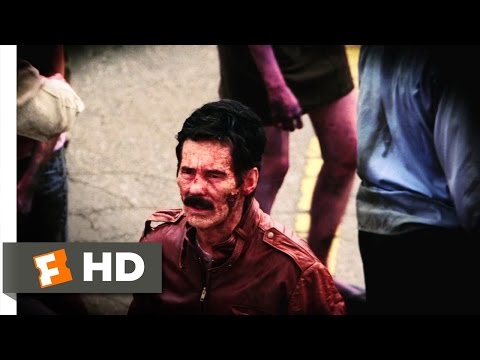
‘Cast Away’ – “I Have Made Fire!”
Sometimes you’ve just gotta celebrate the small victories in life, especially when those small victories are all you’ve got. Case in point: this fabulous scene from Robert Zemeckis’ “Cast Away.”
By the time it rolls around, Chuck Noland (Tom Hanks) has been through a terrifying plane crash, washed up on a deserted island and suffered a series of setbacks in his attempts to both escape the island and survive.
If there was ever a character that desperately needed a win, it’s Chuck. So he becomes determined to start a fire, and lacking matches or any other fire-starting implement, he sets about doing it the way his caveman ancestors did.
He rubs two sticks together really, really fast. It’s a lot harder than it looks, though.
Like Edison trying to invent the lightbulb, we watch Chuck attempt to spark a fire, failing over and over again but not giving up. At one point he slices open his hand and tosses away a volleyball while yelling in pain and frustration.
That inadvertently creates the film’s famous secondary “character,” Wilson.
Finally, after much blood, sweat and exhaustion, he makes a spark and build his first fire. Elated by this accomplishment, lets out a big belly laugh, dances around the blaze and shouts with pride to no one in particular about what he has made.
It’s a relief for both Chuck and the audience to see him finally achieve a victory – even if watching him celebrate it by himself is a bit sad.
The sequence lights off a spark of hope inside him that hey, with some grit and perseverance, maybe he can survive this horrible ordeal. The moment reminds all of us locked up and frustrated right now that we should enjoy the small wins and take hope in what they represent.
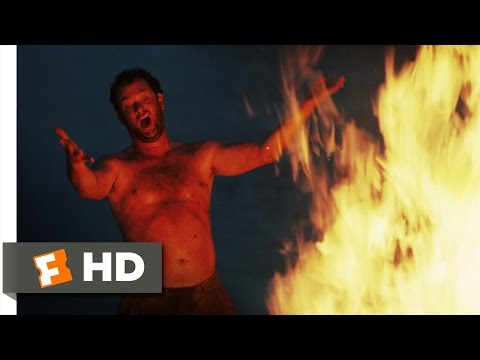
‘The Shining’ – “How Do You Like It?”
As discussed in the previous entry, isolation can make us (or the people with us) go a bit crazy. What’s even more disturbing is finding out the people we’re isolated with were nutso to begin with, and isolation gave them an excuse to show their true colors.
How’s that for a living nightmare?
Stanley Kubrick’s horror classic imagines that exact scenario for poor Wendy Torrance (Shelley Duvall), who is already having the worst winter of her life. She’s holed up in the snowbound (and very haunted) Overlook Hotel with her family while she and her recovering alcoholic writer husband Jack (an unforgettable Jack Nicholson) act as its wintertime caretakers.
Over the months Wendy has watched as Jack slowly loses his mind – a process aided greatly by the many spirits that haunt the old hotel – but things quickly go from bad to much worse in arguably the film’s most chilling scene. Wendy discovers the book her husband has been writing all this time is nothing more than a single sentence, “All work and play makes Jack a dull boy,” typed over and over again.
Duvall captures Wendy’s sense of horror and hopelessness as she realizes that the husband she is trapped with isn’t going insane at all. He’s been that way all along.
Even better? Kubrick’s legendary direction, plus a spine-tingling score and Nicholson’s wickedly funny line to his wife, “How do you like it?”
As the quarantine drags on, and rates of suicide and partner abuse climb, it’s clear that the isolation is bringing out the worst in us. It’s also true that it’s not creating these traits but exacerbating what is already there.
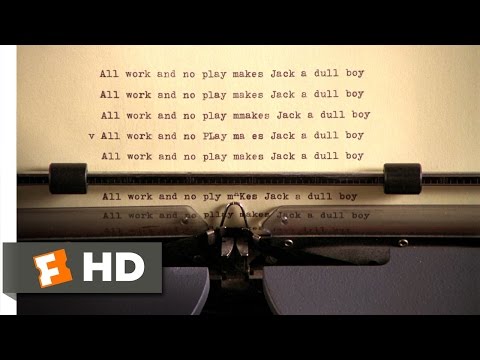
‘Repulsion’ – Hallway of Horror
A rare example of a female-centered isolation story, Roman Polanski’s psychological thriller centers around Carol (Catherine Deneuve), a young Belgian immigrant living in London with her sister.
Young, blonde and beautiful, Carol appears like the kind of gal any man would want during the Swinging Sixties. She’s also repressed to the point of being utterly terrified of both men and sex for reasons that are never really explained.
The combination of her extreme shyness and immigrant status leave Carol feeling lonely on her best days, but when her sister leaves for an extended trip with her boyfriend things get even worse. Carol stops showing up for work and effectively isolates herself in the small apartment, where her already-fragile mental state begins to degrade to a disturbing degree.
The film’s second half is a bizarre and dark journey into the surreal as Carol’s madness slowly and inevitably takes over. As her seclusion wears on, her irrational fear of contact with men manifests itself in bizarre hallucinations, driving her closer and closer to the edge of insanity and violence until she finally trips and falls headfirst right over it.
Nowhere is this better demonstrated than in the disturbing scene where she walks down a hallway and imagines male arms springing up out of the walls to reach out and grope at her. It’s just one of many strikingly surreal moments that Polanski throws at us, a creepy reminder of just how difficult an extended isolation can be on a single person with no one to keep them grounded.
In a sense, Carol gets exactly what she wants by being left alone in that apartment, and it’s a classic example of “be careful what you wish for”.
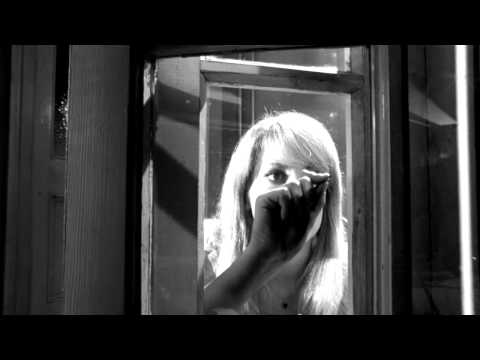
‘Mr. Mom’ – “I’m Losing It!”
Michael Keaton proved in this 1983 farce that going crazy in isolation doesn’t have to be all that scary. In fact, it can actually be laugh-out-loud funny.
Written by the great John Hughes, the comedy stars Keaton as Jack, a working dad who must transition to being the homemaker after he is laid off and his wife (Teri Garr) becomes the new household provider. The shift leaves him to take care of the house and their three demanding kids.
The premise is somewhat dated, with stay-at-home dads becoming much more common in the past 25 years, but it’s still a very funny look at the struggle of fitting into a nontraditional role in life. At first Jack is optimistic that he’ll be able to make the most of his undesired home time, but his life quickly becomes a chaotic, sloppy mess of weight gain, comfortable clothes and too much TV.
Soon he is pushed to the breaking point by the stress, isolation, and mind-numbing routine of his new life. (Those of us who have been stuck in quarantine for the past nine months with our families can relate.)
The movie has plenty of memorable moments (the killer vacuum cleaner is a personal childhood favorite), but it’s Keaton who really makes it work. He injects his usual zany energy and comic timing into the role along with plenty of heart.
Nowhere do we feel Jack’s plight more than when he finally vents his frustrations on his wife in a rant that no other actor could’ve pulled off quite like Keaton does. He delivers a line like, “My brain is like oatmeal!” in a way that is both chuckle-worthy and a desperate cry for help.
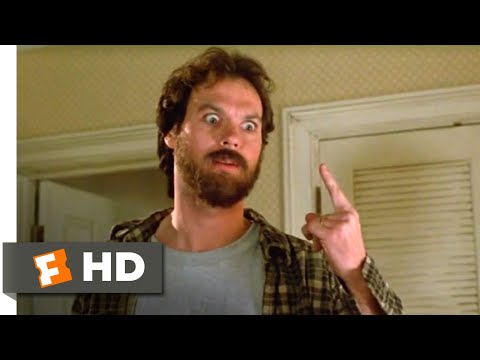
Of course, it doesn’t change his circumstances, and his wife’s suggestion that he take pride in his new home life falls on deaf ears, at least until he wises up later in the movie. But maybe that’s the best thing we can all do: make the best of our current situation and take pride in whatever we can achieve until this whole thing is over.
Honorable mentions: “Oldboy,” “The Martian,” “Five Feet Apart,” “The Aviator,” “Rango,” “Creepshow” and “Moon.”
————————
Jim Culver is a longtime contributor to the now-defunct blog Threedonia.com and can be heard on The Hollywood in Toto Podcast.
The post 10 Great Social Isolation Movie Scenes appeared first on Hollywood in Toto.
